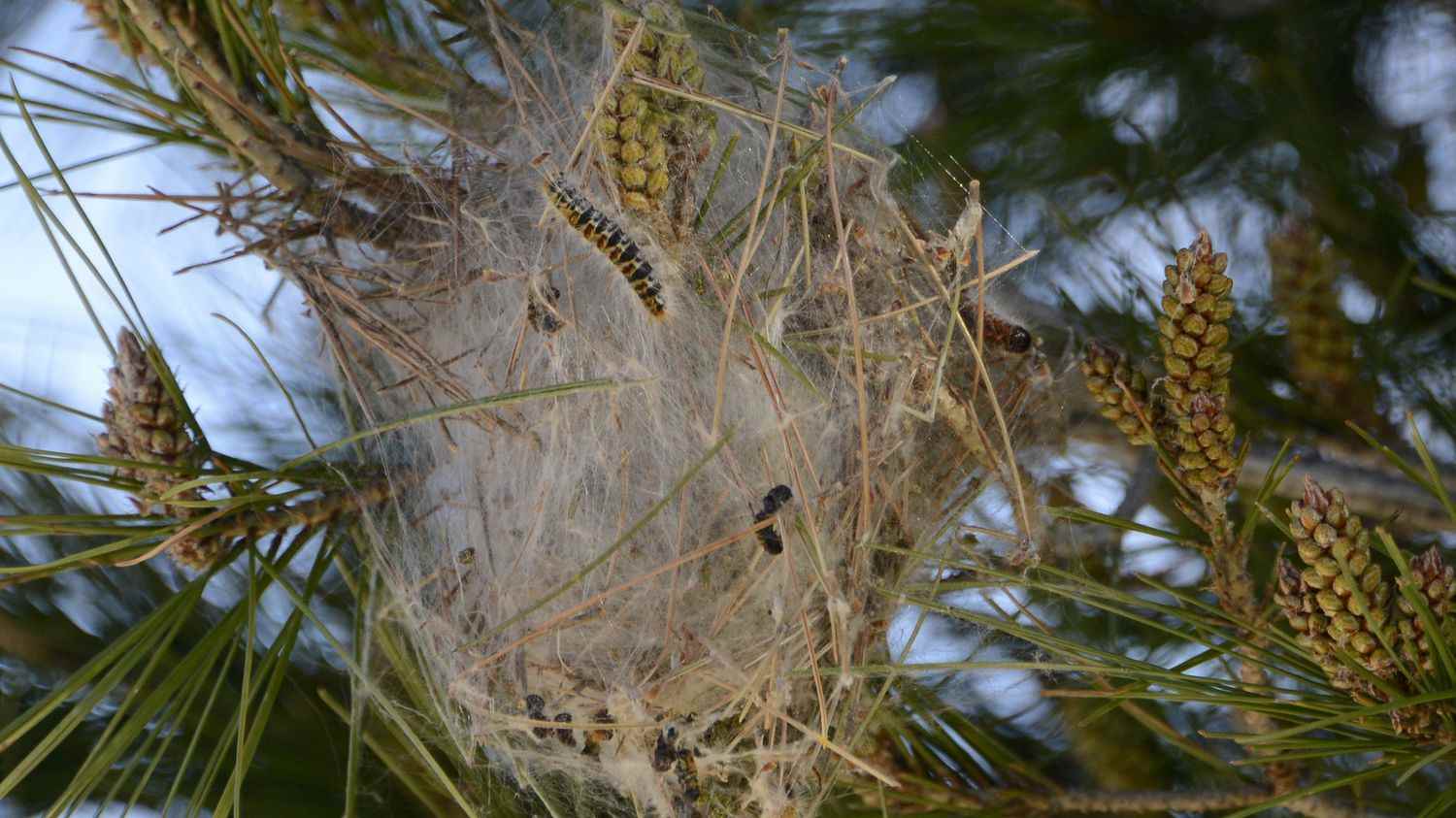While the processionary caterpillar season is in full swing, the species has just been declared as “harmful to human health”.
Article written by
Published
Reading time : 1 min.
The decree declaring theprocessionary caterpillars like “harmful to human health” was published at the end of April signed by the Ministries of Health and the Environment. You may have seen them, precisely, these insects which are currently emerging from their nest (perched in the oaks and pines), and which descend in single file along the trunks to go and bury themselves in the ground (before transforming in butterfly).
These convoys of black and brown caterpillars may make some curious people want to get closer to observe them. But these insects have very stinging hairs that can cause conjunctivitis, itchy skin and irritation of the respiratory system. ANSES, the National Agency for Food Safety and the Environment, has recorded nearly 1,300 cases of poisoning in France between 2012 and 2019 and these caterpillars are also very dangerous for animals, dogs and cats, in particular who must not ingest them.
The fact of declaring themdetrimental to health” allows the prefects to raise public awareness and take measures to eradicate them. It must be said that due to milder winters and rising temperatures, their range has extended across the country and their presence is now one of the indicators of climate change. Originally from around the Mediterranean, they move towards the north of France at the rate of about four kilometers per year and are now found in more than 80 French departments.
Eradication techniques range from mechanical control which simply consists of cutting the branches on which the nests are located, to spraying bio-insecticide on pine needles, to plastic rings which trap the caterpillars when they descend along the trunks.
There is another technique, natural, which is considered more and more effective: that which consists in favoring the presence of predators such as tits or bats, by installing suitable nesting boxes nearby. A blue tit is in fact capable of consuming about twenty caterpillar larvae per day in winter and a couple that feeds its chicks can devour up to 500 per day in spring.
